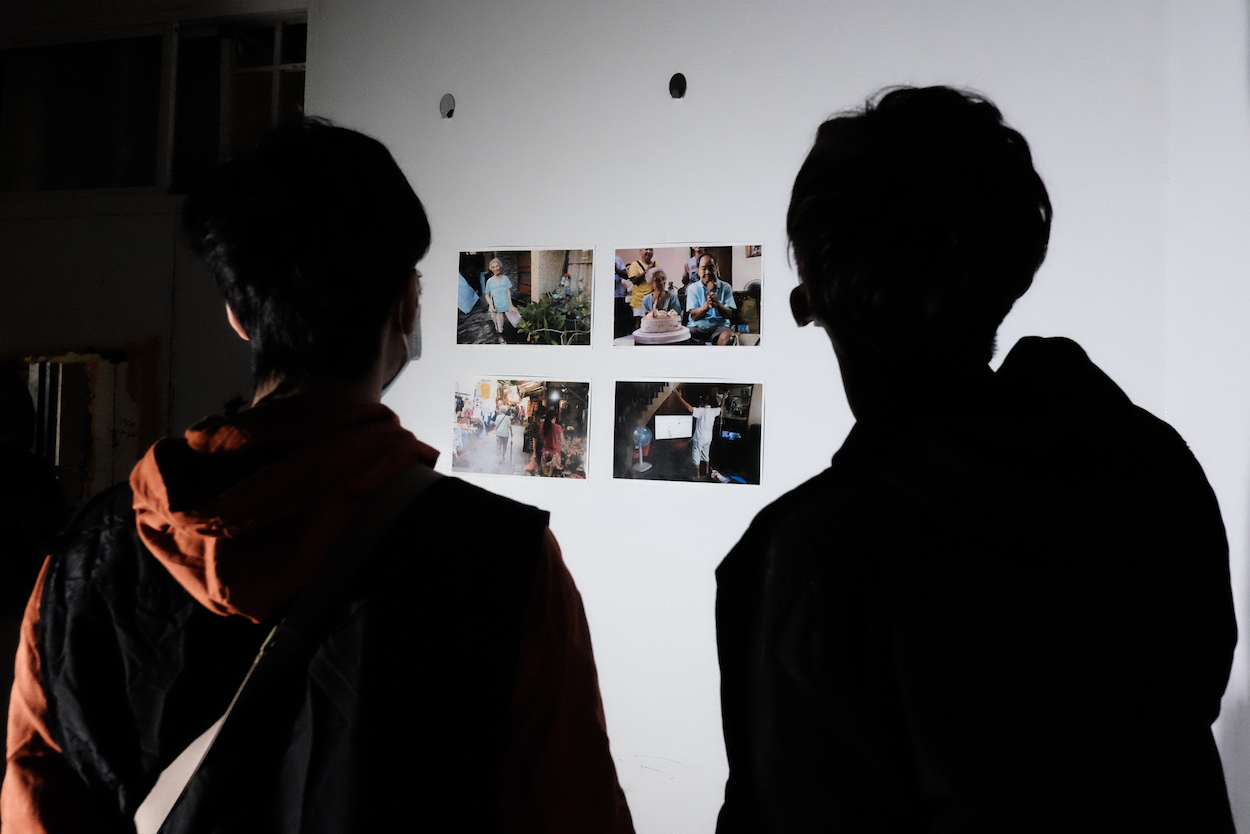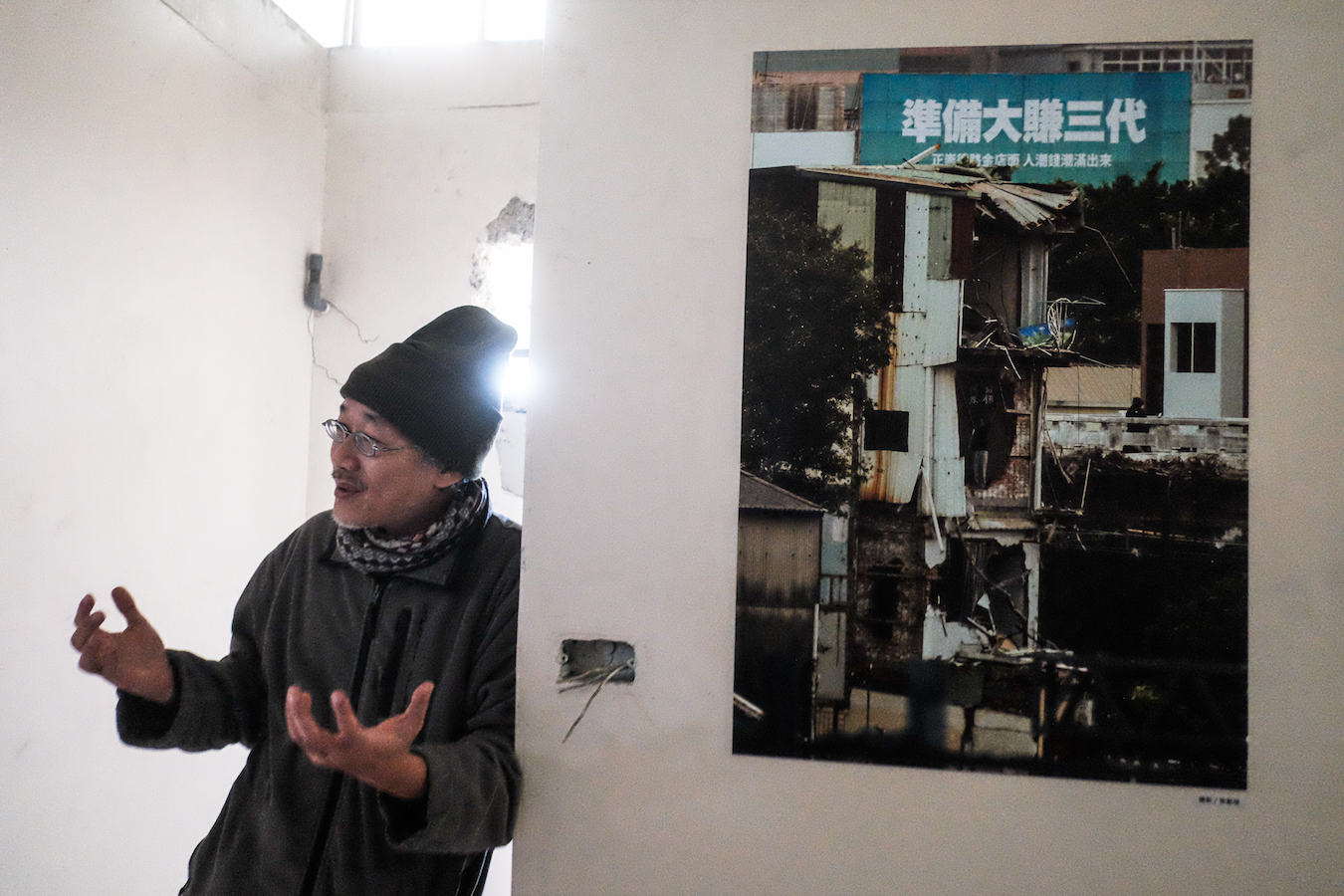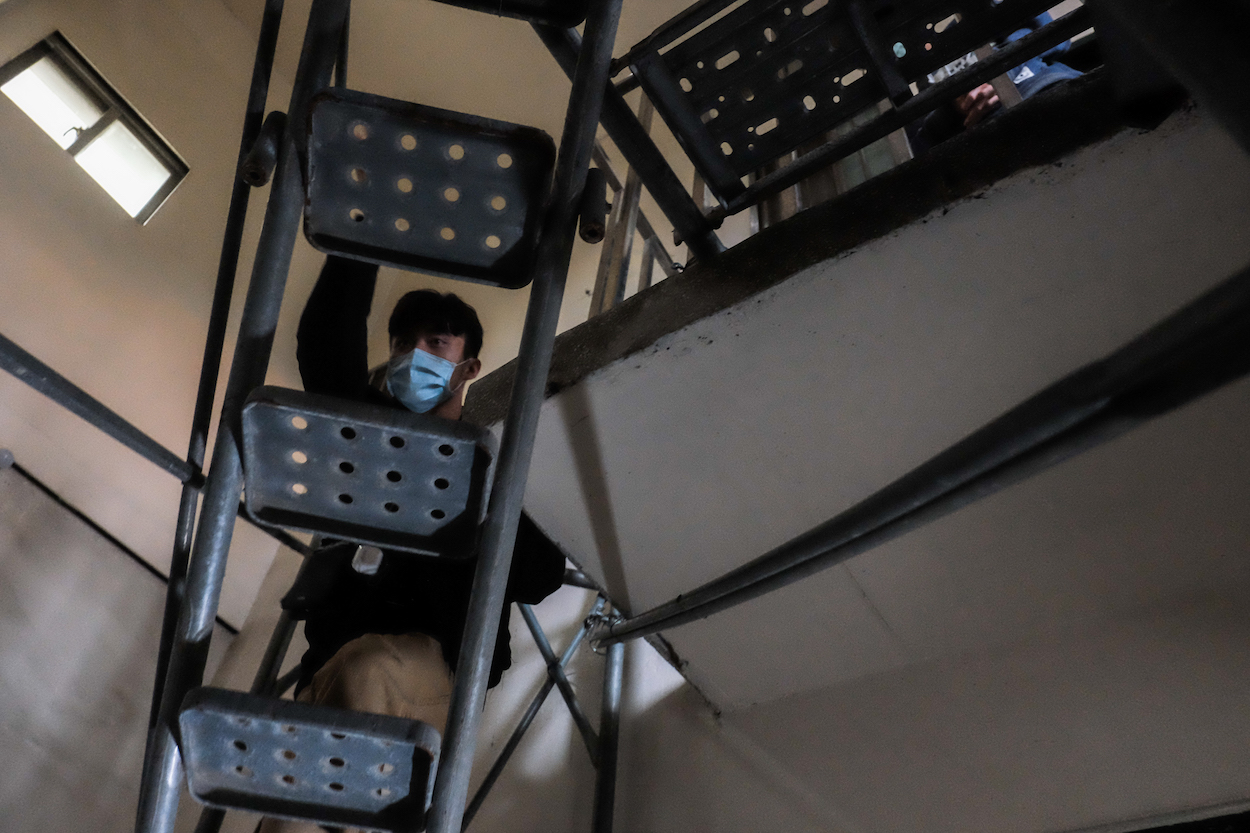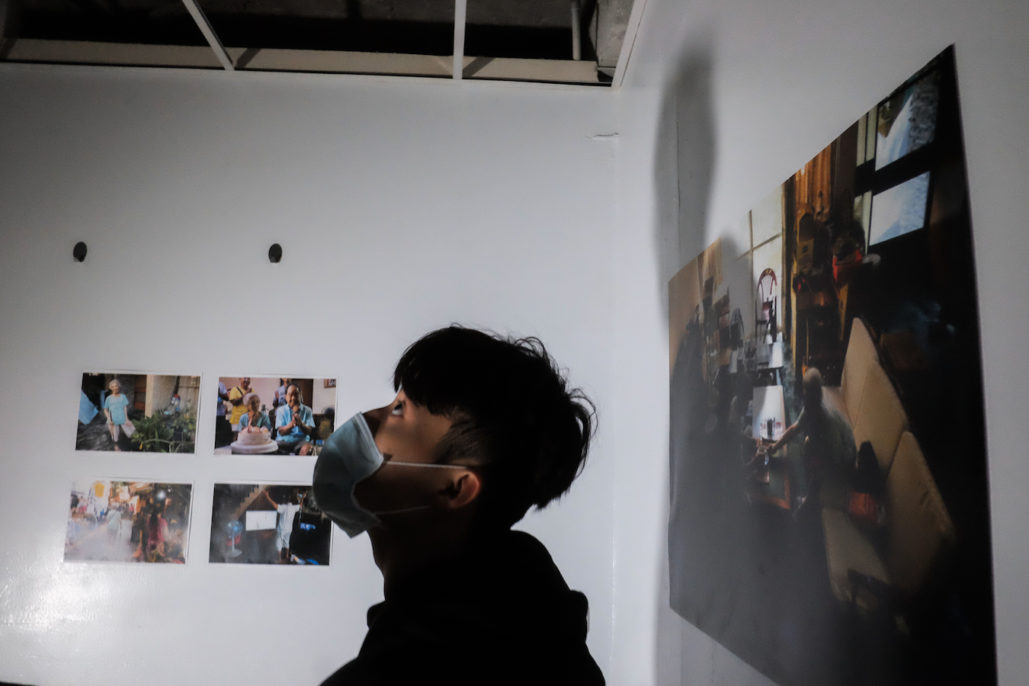by Enbion Micah Aan
語言:
English /// 中文
Photo Credit: Enbion Micah Aan
“CRACKS AND GLIMMERS PHOTOGRAPHY: An Exhibition Bound to End with a House” is a rare opportunity for anyone interested in photography, social movements, issues around gentrification, and the broader struggle for equality. Tainan’s Railway Eastern Expansion (鐵路東移) has been an ongoing struggle for twenty-five years, and Huang Chun-Cian’s (黃春香) house is the very last holdout against eviction to expand the railway. This exhibition takes place at the very site of struggle and will continue until the house is torn down.
Because of the need to move the railway eastward to avoid demolishing the Tainan Train Station, a building that is legally designated as a historical site, the government needs to expropriate housing, displacing 340 households. The government, instead of simply paying market rate for the house and land expropriation, opted to pay rates below market rate and offer resettlement housing at a discount rate. People who face property expropriation often need to make up the cost difference on their own, usually by way of taking out loans, since the settlement can cost significantly more than expropriation compensation, especially for those whose houses are partially expropriated, as they would need to pay for the settlement housing and reconstruction the original houses.

Photo credit: Enbion Micah Aan
While after two years of acquiring the resettlement housing, it is possible for the affected to turn around and sell their resettlement housing to make a profit, this disempowering and complicated mechanism forces them to be land speculators. As Events in Focus editor-in-chief Sun Qiong-Li (孫窮理) explains in Marxist terms, the government is only interested in the exchange value of the property and not the use-value of housing. In Huang’s case, the risks associated with land speculation and the prospect of having to move is not at all something desirable—the younger Huang is sixty-five, the older is one hundred years old.
Finances aside, the railway projects are a way for the government to gentrify the neighborhoods by way of “urban renewal”. Traditionally, in Tainan, housing along the railroad is for people of lesser means since the noise of the train going by is obviously undesirable. As Sun also points out, by developing the land around railroads, certain classes of people are privileged, and the diversity of the city is sacrificed. Sun, a familiar name for people who follow left perspectives in Taiwan, happens to live in the same neighborhood and has been following and reporting on the case.

Events in Focus editor-in-chief Sun Qiong-li. Photo credit: Enbion Micah Aan
The exhibition includes moving commentaries by Sun. Sun guides the guests through the house, explaining how this house will be partitioned by expropriation, making the first floor uninhabitable, which is a serious problem for the Huang family, since this takes away living space for a centenarian. Then the exhibition uses a laser to draw a line at the stairs, making it clear that the stairs will be unusable—one of the protest slogans is “Can’t Go Home without Stairs” (沒有樓梯不能回家). The tour can be quite intimate, as Sun speaks of not only the space but also people’s rooms, including a disabled tenant who was staying with the Huang family rent-free. The example of the tenant is significant, as reports around the issue have always focused on homeowners, who are in a better position to deal with expropriation than rental tenants.
The house is currently undergoing demolition, so there are signs of work along the way. When a guest stepped on some bricks and almost tripped, Sun joked that “Tripping is part of the exhibition!” The most important part of the exhibition is indeed going through the house itself, as guests are confronted by the destruction of a home first hand. It is unusual for a demolition team to take down stairs first, as demolition workers would need the stairs as well, but to show the government’s resolve and determination to tear down the house, the stairs between the third floor and the fourth were the first to be destroyed. As such, the visitors have to climb up a set of temporary stairs to see part of the exhibition. Visitors are also able to meet and talk to the actual people portrayed in the exhibition, making the representation of the subjects much more meaningful.

Visitor climbing up the temporary staircase. Photo credit: Enbion Micah Aan
The photographs by the four photographers (Song Xiao-hai or 宋小海, Sun Qiong-li or 孫窮理, Chen Qian-rui or 陳謙睿, Yang Zi-lei or 楊子磊) selected for the exhibition are also outstanding examples of documentary photography and photojournalism. The pictures are not restricted to just the Huang family, as other families are also presented here. It was also a deliberate choice for the organizers/curators not to select violent images from confrontation with the police—this considered choice gives the overall exhibition of quiet dignity in the face of overwhelming power.
The exhibition features both moving portraits and straight forward documentary photographs. The photographs included some very powerful images, such as the last day of an elderly in her home, the Huang family matriarch celebrating her 100th birthday outdoors (since the house has been partially demolished at that point), and pictures that show the great bonds forged during the time of resistance. The cracks and windows torn down by the demolition team unexpectedly also created “photographs”. Visitors can see through these cracks and see not only sceneries but also the very train construction that displaces many families.

Photo credit: Enbion Micah Aan
Electricity has been cut at the location, so natural light and sometimes a flashlight is used to light the photographs. One would expect this lighting limitation to be problematic, but the lack of perfect visibility actually adds quality to the exhibition, since it reflects perfectly the uncertain future and desperation and challenges presented by the government’s constant need for capitalistic developments.
As mentioned, the exhibition will go on until the house is torn down. The house is only one kilometer from the Tainan station, so non-Tainan residents should also make the point of visiting. To visit this exhibition is more than simply being a typical gallery visitor. To see the very ephemeral quality of the exhibition, insightful photography, moving portrayals of the families and the graffiti around the site of resistance also stand in solidarity with resistance in the face of capitalist development. It is well worth the trip.



